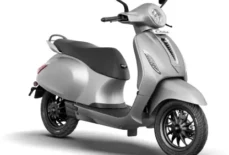Plastic carry bags, once hailed for their convenience, have become emblematic of a global environmental crisis. These seemingly innocuous items, used for a brief moment to transport goods, have lasting implications for the health of our planet. In this article, we delve into the profound environmental impact of plastic carry bags, exploring their life cycle, consequences, and alternatives.
I. Introduction
Plastic Bag Carry often referred to as plastic shopping bags, are lightweight, inexpensive, and widely used for transporting goods. Their popularity stems from convenience, as they are readily available in retail outlets worldwide. However, their convenience belies a significant environmental cost.
II. The Life Cycle of Plastic Carry Bags
Production Stage
The journey of a plastic carry bag begins with the extraction and refinement of crude oil or natural gas, from which plastic polymers are derived. These polymers are then processed into thin sheets and formed into bags through various manufacturing techniques.
Distribution and Usage
Once produced, plastic carry bags are distributed to retail stores, where they are used to package purchased items for customers. Their lightweight nature and durability make them a preferred choice for both retailers and consumers.
Disposal Stage
After serving their immediate purpose, plastic carry bags often meet a fate far from benign. Many end up in landfills, where they can take hundreds of years to decompose. Others are discarded improperly, littering landscapes and polluting water bodies.
III. Environmental Impact
Pollution of Land and Water Bodies
Plastic carry bags are a pervasive form of pollution, contaminating land and water ecosystems. In urban areas, they clutter streets and parks, clogging drainage systems and posing hazards to wildlife. When carried by wind or rain, they find their way into rivers and oceans, contributing to marine debris.
Harm to Wildlife
Marine animals often mistake plastic bags for food, leading to ingestion and entanglement. This can result in suffocation, starvation, and internal injuries, ultimately threatening vulnerable species and disrupting ecosystems.
Contribution to Climate Change
The production of plastic carry bags generates greenhouse gas emissions, contributing to climate change. Furthermore, when plastic bags degrade in landfills or incinerate, they release additional greenhouse gases, exacerbating the problem.
IV. Alternatives to Plastic Carry Bags
Reusable Bags
One of the most effective alternatives to plastic carry bags is the use of reusable bags made from durable materials such as canvas or recycled plastics. These bags are not only environmentally friendly but also cost-effective in the long run.
Biodegradable Alternatives
Innovations in biodegradable plastics offer promising alternatives to traditional plastic bags. These materials break down more quickly in the environment, reducing their ecological impact.
Government Policies and Regulations
Governments play a crucial role in addressing the Big Plastic Carry Bag problem through legislation and regulation. Many countries have implemented bans or taxes on single-use plastic bags, encouraging the adoption of more sustainable alternatives.
V. Individual and Collective Responsibility
Importance of Individual Actions
While systemic changes are necessary, individuals can also make a difference by reducing their consumption of plastic carry bags. Simple actions such as bringing reusable bags to the grocery store or opting for products with minimal packaging can have a significant impact.
Community Initiatives
Communities around the world are organizing clean-up efforts and advocating for policies to combat plastic pollution. By mobilizing collective action, communities can raise awareness and effect change at the local level.
Corporate Responsibility
Businesses have a responsibility to minimize their environmental footprint, including the use of plastic carry bags. Many companies are implementing sustainable packaging initiatives and exploring alternative materials to reduce reliance on plastics.
VI. Conclusion
Black Plastic Carry Bags may offer convenience in the short term, but their long-term consequences for the environment are undeniable. From pollution to harm to wildlife to contributions to climate change, the environmental impact of plastic bags is far-reaching. However, by embracing alternatives and taking individual and collective action, we can mitigate this impact and move towards a more sustainable future.
FAQs
- Are plastic carry bags really that harmful to the environment?
- Yes, plastic carry bags pose significant environmental threats due to their persistence in the environment and their ability to harm wildlife and ecosystems.
- What can I do to reduce my use of plastic carry bags?
- You can start by carrying reusable bags when shopping and avoiding products with excessive packaging.
- Are biodegradable plastic bags a better alternative?
- While biodegradable plastics break down more quickly than traditional plastics, they still pose environmental challenges and may not be a perfect solution.
- How can I encourage my community to address the plastic bag problem?
- You can organize clean-up events, advocate for local policies to reduce plastic bag usage, and educate others about the environmental impact of plastic bags.
- What role do businesses play in reducing plastic bag usage?
- Businesses can adopt sustainable packaging practices, offer incentives for customers to use reusable bags, and explore alternative materials to plastic.








































